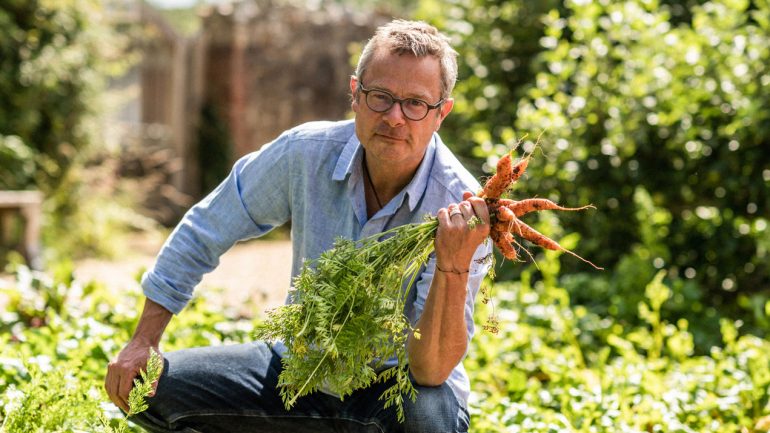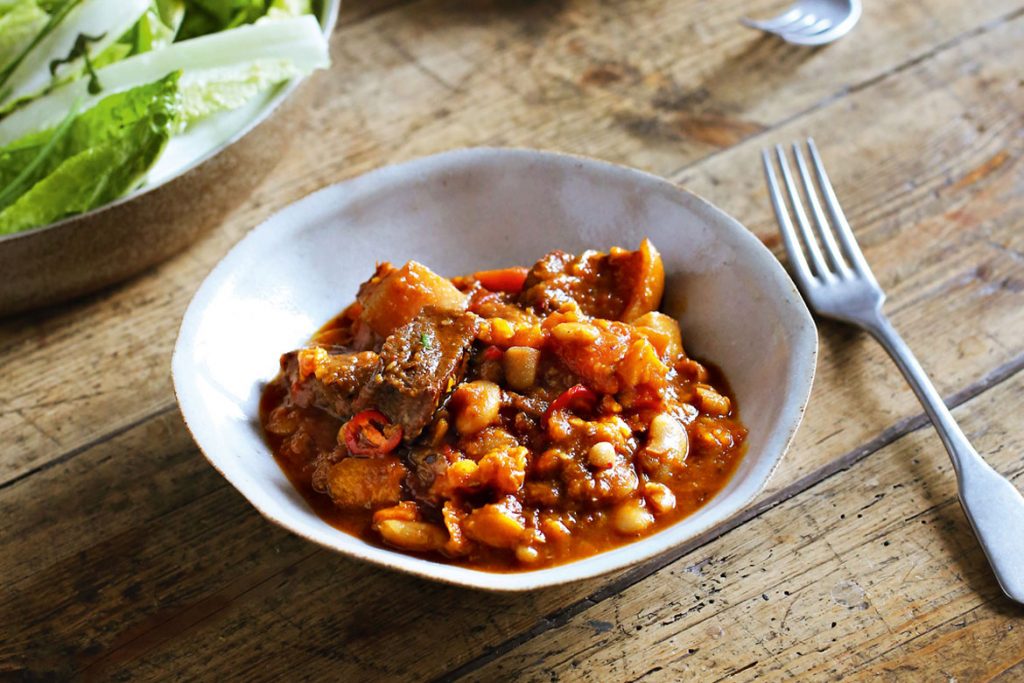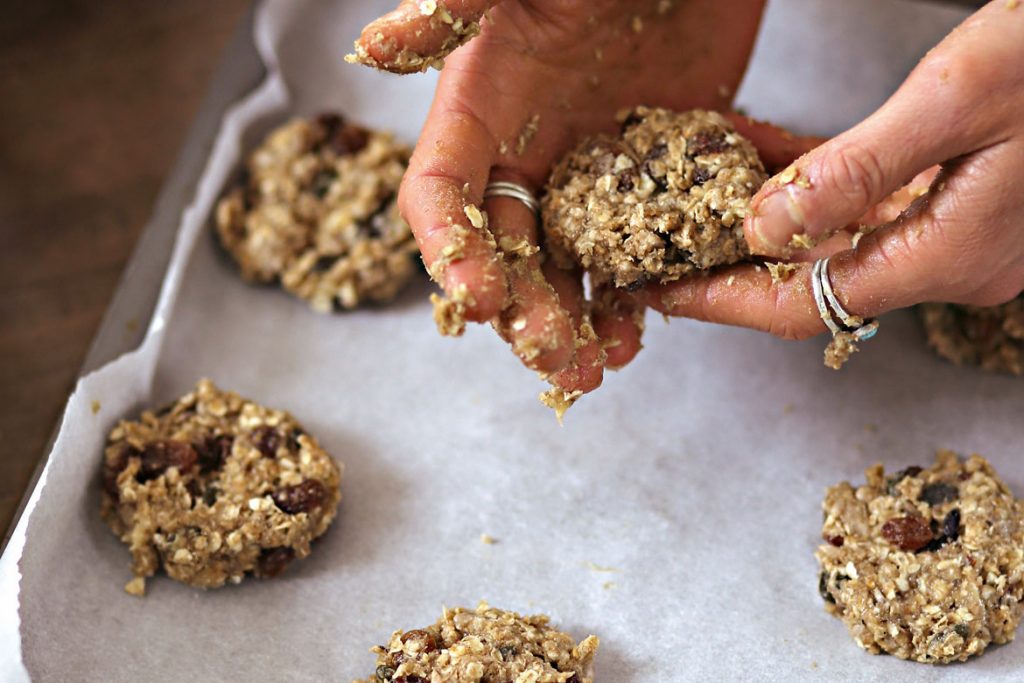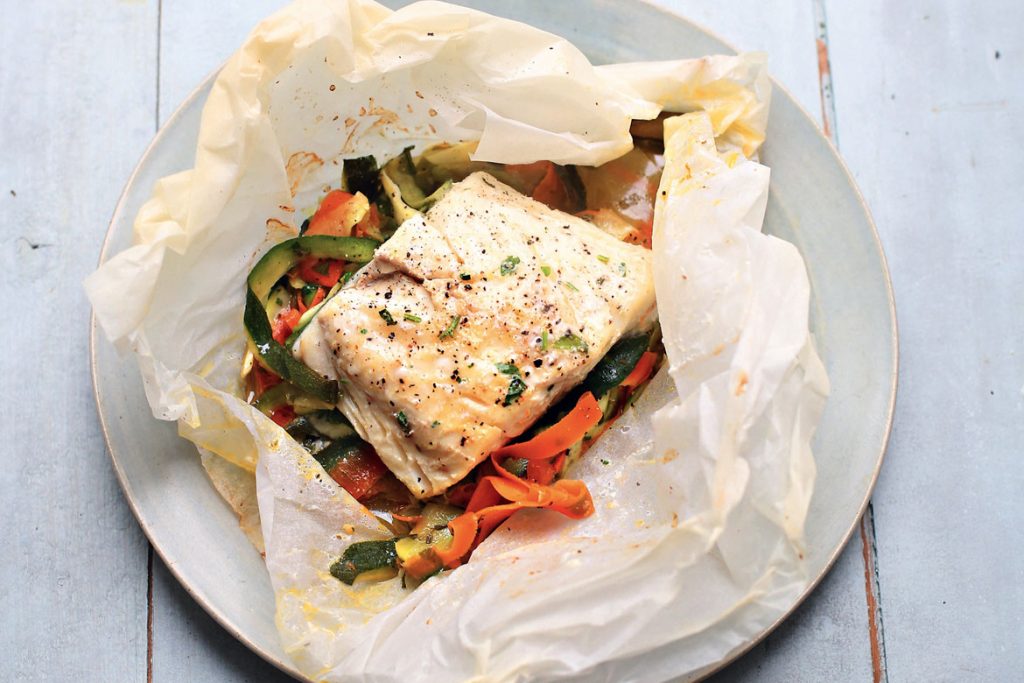The writer and broadcaster talks to Katie Wright about his holistic approach to health, and staying positive during a difficult year.
It’s just past lunchtime and Hugh Fearnley-Whittingstall is already thinking about tonight’s family dinner plans. “I think we’re going to have cauliflower steaks with cauliflower cheese – my son loves cauliflower cheese,” he tells me on the phone from Devon. “I’ve just grown the most enormous cauliflower, probably the biggest one I’ve ever grown. I’ve had to stop short of the mentality of somebody growing vegetables for show.”
LEFT: PA Photo/Simon Wheeler | RIGHT & TOP OF PAGE: PA Photo/Matt Austin
No stranger to the vegetable patch, of course, the River Cottage founder has enjoyed having more time to tend to his crops during the pandemic, and also took the opportunity to add three farm animals to the fold.
“During the beginning of the spring [last year], we decided to get some goats. We got a nanny for milking and two wethers, which are castrated male goats. We reared the boys for meat and we got some lovely milk every day. We made goat kefir and we actually made some lovely goat’s cheese from the kefir, which was really delicious.”
Stirring up batches of gut-boosting fermented drinks like kefir and kombucha, the writer and broadcaster is practising what he preaches in latest book, Eat Better Forever, which sets out seven principles of a healthy diet, rather than offering a single quick-fix solution, as health gurus often do.
“Newspapers love to jump on a food story or a diet story or a food health thing, and it’s blown up into the new thing or the latest thing,” Fearnley-Whittingstall says. “Sometimes those things are misleading.”
The author realises that adhering to seven tenets – which include eating a varied diet, as many whole foods as possible, feeding your gut and reducing refined carbs – may not be feasible for everyone, so suggests picking “the ones that you think make sense to you and are going to work for you. The whole point is not to pin everything on a single approach,” he adds.
The final chapter makes the case for mindful eating, something the 55-year-old admits he’s struggled with in the past. “I’d be happily thinking about other things, while tucking into crisps or eating a sandwich on a shoot, or automatically popping the cork when I get home from work in the evening.
“I’ve learned to manage that by always being more thoughtful – well, not always, because goodness knows this is not about perfection. It’s about being in touch with your thinking about your eating, and therefore about the eating itself.”
Likewise, while the broadcaster has found that intermittent fasting (reducing one’s calorie intake on certain days) has helped him lose weight, he recognises it’s not for everyone.
“If I’m dashing about making a programme, or I’m on my feet all day, if I don’t have something to eat fairly soon in the morning I’m a bit stressed and a bit grumpy,” he says. “Whereas I find I actually enjoy fasting a little bit when I’m having a quieter time. So I’ve been able to do that quite a bit recently.”
‘Go whole’ – eating more whole foods – is the first principles of the Eat Better Forever approach. After a TV project slated for shooting was postponed, Fearnley-Whittingstall spent most of 2020 at home in East Devon with his wife Marie and four children (Chloe, 24; Oscar, 21; Freddy, 17; and Louisa, 10).
“It was tense at times because all the kids, including the grown-up ones, were at home for at least the first three months, and that doesn’t normally happens these days apart from Christmas.”
With the River Cottage cookery school and restaurants forced to close due to restrictions, he says the business side of things has been “really tough. We’ve decided not to reopen one of our restaurants, which is really sad.”
But he’s trying to look on the bright side: “At a personal level, I have to say elements have been really amazing. I’ve had amazing time at home with the family, growing [vegetables] and cooking and walking, looking after the goats.
“I’ve made a bunch of recipes, which my son Freddy filmed and we put up as a part of the River Cottage Instagram – stuff like that to keep people engaged and keep in contact with our supporters through these strange times.”
When the great flour shortage of 2020 hit, the cook got to work coming up with a baking alternative. “It was quite a nifty recipe for chickpea cookies, which seemed to go down quite well, and I still make them because they’re actually really delicious.”
Identifying a gap in his botanical knowledge, he set about photographing wildflowers on his daily walks in the Devonshire countryside.
“For a couple of months, I was doing a daily wildflower tweet on my Twitter feed, which people seemed to like. I’ve photographed and identified over 170 wild flowers all within two miles of my front door. So that was quite fun.”
Now, with a smidgen of hope (dare we say it) potentially on the horizon, Fearnley-Whittingstall wants to use the opportunity to keep on doing the things that have brought him joy during this turbulent time.
“Probably there are lots of people who do want to get back to just how things were – and that definitely applies [for me] – to seeing friends, spending more time with my mum and dad, stuff like that,” he says.
“There are other things that are very special, and I’m keen to take them take them along into the post-lockdown world.”
Eat Better Forever by Hugh Fearnley-Whittingstall, photography by Simon Wheeler, is published by Bloomsbury, priced £26. Available now (bloomsbury.com)
Words by Katie Wright, PA
PA Photo/Simon Wheeler
Chunky beef chilli recipe, serves 6-8
INGREDIENTS
- Olive or vegetable oil, for frying
- About 200g free-range pork belly (rind on or off), cubed
- 800g chuck or stewing steak, cubed
- 150ml red wine (optional)
- 2 medium onions, halved and thinly sliced
- 4 medium carrots, halved and thickly sliced
- 4 garlic cloves, sliced
- 1tsp dried chilli flakes
- 2tsp each cumin and coriander seeds, crushed (or 1tsp each ground)
- 1tsp smoked paprika
- 1 star anise (optional)
- ½–1 fresh red chilli, sliced (optional)
- A few strips of pared orange zest
- 3–4 sprigs of thyme (optional)
- 400g tin tomatoes
- About 1L hot beef stock, veg or chicken stock
- 1 large sweet potato (300–400g), peeled and cubed (or you can use squash)
- 2 x 400g tins beans (cannellini, kidney or butter beans), drained and rinsed
- Sea salt and black pepper
METHOD
- Set a large heavy frying pan over a high heat and add a dash of oil. When hot, add the pork with some salt and pepper. Cook briskly for several minutes, turning the meat from time to time, until browned all over.
- Transfer to a large flameproof casserole dish. Repeat the browning process with the beef, doing it in two batches so as not to crowd the pan, seasoning it as you go and adding a dash more oil to the pan if necessary.
- When all the meat is browned and transferred to the casserole, reduce the heat under the pan to low and pour in the red wine (or 150ml of the hot stock). It will bubble and hiss. Stir the liquid, scraping the pan with a spatula, to release all the caramelised meaty bits from the base of the pan. Bring to a simmer and set aside.
- Meanwhile, add the onions, carrots, garlic, spices, chilli if using, orange zest, a pinch of salt and a twist of pepper, plus the thyme if using, to the casserole with the browned meat. Cook over a medium heat, stirring often, for eight to 10 minutes to soften the veg.
- Tip the liquid from the frying pan over the meat. Add the tomatoes and hot stock; if the liquor isn’t enough to cover everything, add a little more stock or boiling water. Bring to a low simmer and cook very gently for one-and-a-half hours or until the meat is becoming tender.
- Add the sweet potato and beans (with a little more hot stock or water if needed) and cook for a further 30 to 45 minutes. Check that all the meat and veg are nice and tender, tweak the seasoning and the chilli is ready to serve.
PA Photo/Simon Wheeler
Rye and banana cookies, makes 15 or 24 ‘bite-sized’ cookies
INGREDIENTS
- 125g dark rye flour
- 150g porridge oats
- ½tsp baking powder
- 1tsp ground mixed spice
- 75g brown sugar
- 2tsp ground flaxseed
- 120g raisins or chopped dried apricots
- 100g roughly chopped nuts or mixed seeds
- 2 ripe medium bananas, mashed
- 100g extra virgin olive oil, or coconut oil (melted)
METHOD
- Preheat the oven to 180°C/Fan 160°C/Gas 4. Line 2 baking sheets with baking paper.
- Put the flour, oats, baking powder, spice, sugar and ground flaxseed into a large bowl and mix thoroughly. Add the dried fruit and nuts or seeds and mix well again, separating any of the fruit if it’s sticking together. Add the mashed bananas and the oil and mix again, really well.
- Put tablespoonfuls of the mixture (dessert spoonfuls for bite-sized cookies) onto the prepared baking sheets, shaping them roughly into thick, round cookies. Bake for 12 to 15 minutes, until golden and starting to brown on the bases.
- Leave to cool a little and then transfer to a rack to cool completely. Store in an airtight tin for up to five days, or for a few months in the freezer.
PA Photo/Simon Wheeler
Baked fish and veg parcels, serves 4
INGREDIENTS
- 500g courgettes (4 medium)
- 400g carrots
- A bunch of spring onions, trimmed
- 2 garlic cloves, thinly sliced
- A few sprigs of thyme, leaves picked and roughly chopped
- A small bunch of parsley, leaves picked and chopped (optional)
- 3–4tbsp olive oil
- 4 fish fillets (150–200g each), such as hake or coley, or sustainable (MSC-certified) haddock or cod
- About 200ml white wine or cider, vegetable stock or tomato passata
- Sea salt and black pepper
- Cooked whole grains (30–60g per serving), to serve
METHOD
- Preheat the oven to 200°C/Fan 180°C/Gas 6 and have ready a large baking tray with a rim (so no juices can escape). Tear off four large sheets of greaseproof paper or foil.
- Cut the courgettes into thin ribbons or fine slices, using a mandolin, swivel veg peeler or a food processor fitted with a thin slicing blade. Put the courgettes into a large bowl. Ribbon or slice the carrots in the same way and add to the courgettes.
- Finely slice the spring onions and add these too, along with the garlic, thyme, parsley if using, and two tablespoons of the olive oil. Season with a pinch of salt and a twist of pepper. Toss together well with your hands.
- Pile the veg in the middle of each sheet of paper or foil, dividing it equally. Place a fish fillet on top of each pile and season it with salt and pepper. Gather up the edges of the paper or foil and bring them up around the veg and fish. Pour a good splash of wine, cider, stock or passata into each parcel.
- Crimp the top edges of the parcel together. With foil, you’ll be able to seal the package completely; with paper, you can just scrunch it up so the fish is mostly covered. Place the parcels carefully on the baking tray. Bake in the oven for 15–20 minutes or until the fish is cooked through and the veg is just done (it will still be al dente).
- Bring the parcels to the table and accompany with whole grains, to soak up the juices.
Eat Better Forever by Hugh Fearnley-Whittingstall, photography by Simon Wheeler, is published by Bloomsbury, priced £26. Available now (bloomsbury.com)






Leave a Reply